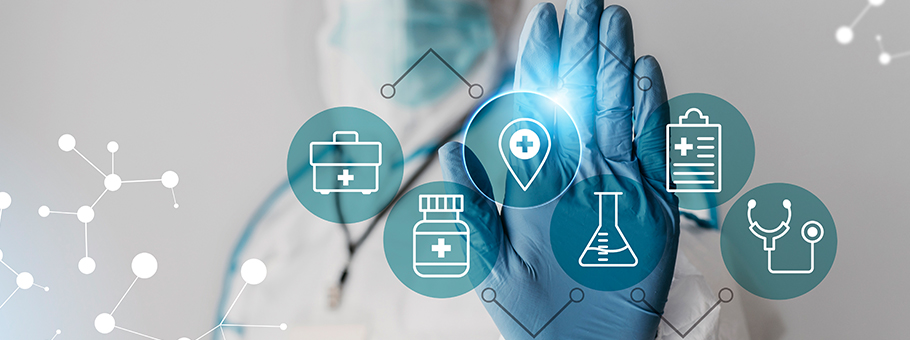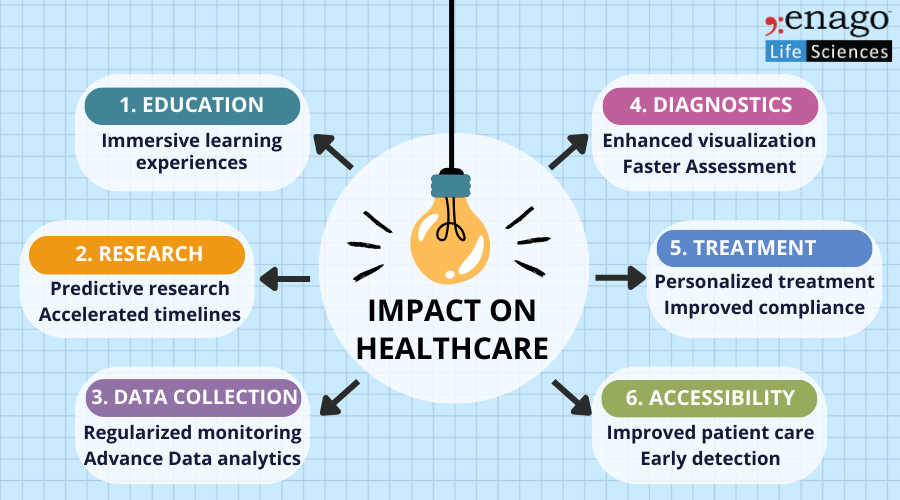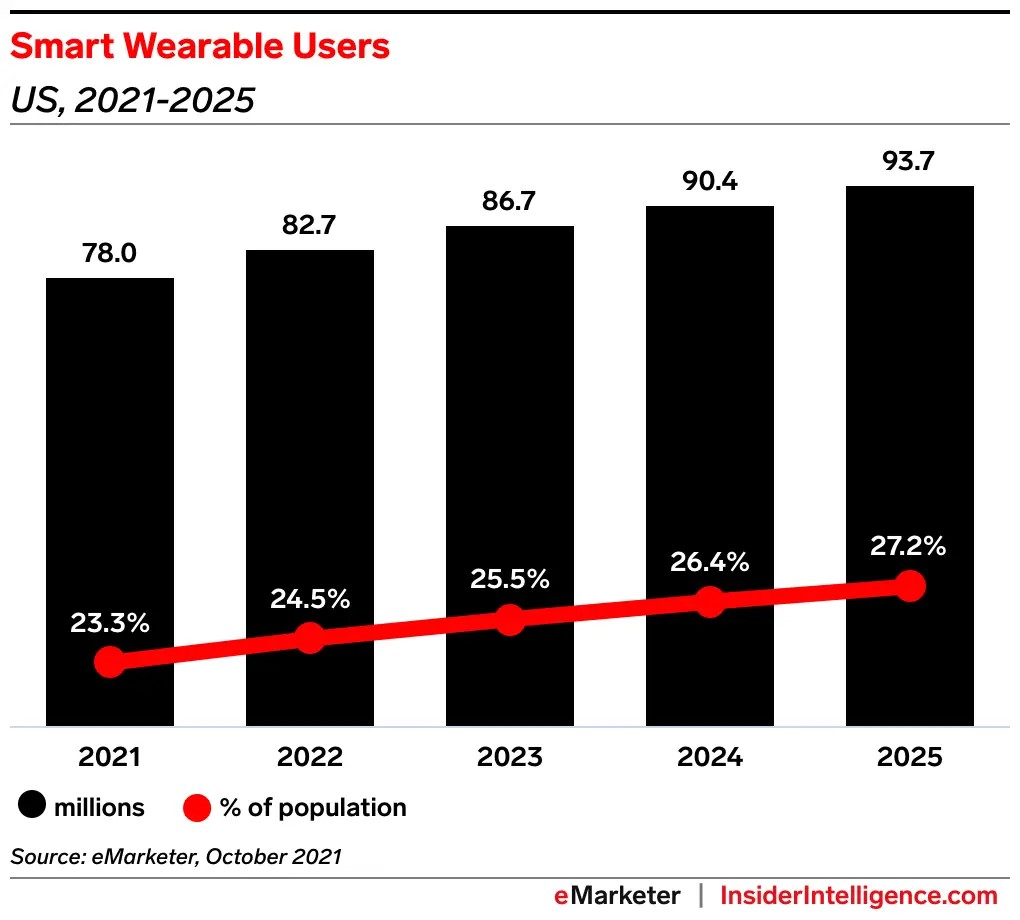We live in the age of digitization and rapid technological and product development. So it’s no wonder that the same is true for one of the perennially preferred research areas: healthcare. Advancements in medical technology are bringing about profound changes that benefit both patients and healthcare providers. These transformative innovations are reshaping the way we approach healthcare, improving patient outcomes, increasing accessibility, and even strengthening training and knowledge creation.
Impact of Medical Technology on Healthcare
Game-Changers in Medical Technology
Let’s look at some of the remarkable ways medical technology is revolutionizing the healthcare landscape.
1. Telemedicine and Remote Monitoring
Telemedicine has opened up the world of virtual healthcare, enabling patients to consult with healthcare professionals from the comfort of their homes. The Covid pandemic has accelerated the use of telemedicine and with the increased market penetration, it continues to gain more interest due to the high convenience factor. Moreover, online platforms such as GlobalMed, and Headspace, can now provide access to doctors through smartphones, reducing the need for in-person visits.
2. Smart Wearables
The increased possibility of remote health monitoring has been facilitated by the ever-increasing market of wearable devices, such as Fitbit and Apple Watch. Just the US user market is expected to grow by 25.5% in 2023 with an estimation of nearly 1 in 3 people using smart health wearables by 2025.1 Use of such devices allows doctors to track patients’ vital signs and make necessary interventions remotely, particularly benefiting those with chronic conditions. Beyond just the regular vitals, wearable glucose meters or ECG monitors are game-changers for early diagnosis and monitoring as well.
3. CRISPR
Clustered Regularly Interspaced Short Palindromic Repeats (CRISPR) technology has ushered in a new era of possibilities in healthcare as highlighted by the recent recognition from the Nobel Prize. This technology has enabled high-precision gene editing that can be a game-changer for the prevention and treatment of some of the biggest public health threats, such as HIV or cancer. From treating genetic disorders, treating rare diseases, to developing personalized medicine and targeted drug development, CRISPR offers a toolkit that promises to revolutionize patient care for the years to come.
4. Robotics and Automation
Robotics has been integrated into several functions of healthcare, including rehabilitation, pharmacy management, disinfection, etc. Surgical robots perhaps have had the most lasting impact on healthcare. These robots have been implemented for surgery preparation to assist surgeons in visualizing and practicing approaches but also in minimally invasive surgeries. Systems such as the da Vinci Surgical System can facilitate minimally invasive procedures with remarkable precision, enabling smaller incisions, reduced scarring, and quicker patient recovery times.2
5. Bioprinting
3D printing industry is poised to hit the $6 billion mark in the medical applications domain alone by 2027.3 Its key benefits include low production time, affordability, high customization, and adaptability with printable biomaterials. Bioprinting is of particular interest to the healthcare community as 3D printing of bio-inks loaded with live cells has been extensively utilized in laboratory settings for recreating tissues, organs, and other systems for research and developmental purposes. Recent research has even successfully experimented printing of blood vessels,4 expanding the horizons of what is possible with 3D and bioprinting.
6. Virtual Reality and Augmented Reality
Virtual Reality (VR) and Augmented Reality (AR) can simulate clinical conditions more comprehensively. Such technologies are being harnessed for immersive medical education to expose students to situations they may face in clinical practice. For instance, Elsevier has partnered with Apple to create Complete HeartX which generates spatial experiences using mixed reality for practical skill development for budding cardiologists.5 These technologies are transforming pain treatments and physical therapy as well as for treatment of memory, and cognitive functions. For instance, Cedars-Sinai Medical Center used VR to help patients manage pain, resulting in a nearly 25% decrease in reported pain levels.6
7. Artificial Intelligence in Diagnostics
Artificial intelligence is transforming both diagnostics and treatment workflows. Projects such as Imaging COVID-19 and InnerEye are improving CT scanning and reporting processes. This technology allows for a deeper analysis of medical images and the identification of patterns from large datasets that might accelerate the identification of diagnostic markers, ultimately leading to more timely and precise diagnoses. Machine Learning is already being utilized for new drug discovery processes and is only expected to grow in both adoption and efficiency, leading to both cost savings and faster workflows.
Future Trends in Medical Technology
The healthcare industry is experiencing a revolution thanks to medical technology. The innovations highlighted here exemplify the incredible progress being made in healthcare, creating a tangible impact on patients’ lives. While medical technology offers vast potential, ethical concerns around patient privacy, data security, and equitable access must be addressed. The future promises further exciting advancements in telemedicine, AI, and precision medicine. Responsible innovation and regulation are essential to navigate this ever-evolving healthcare landscape and ensure the best outcomes for patients and society.
As technology continues to advance, embracing these innovations becomes paramount in ensuring the health and wellness of individuals and communities worldwide. Stay tuned for even more exciting news about future transformations in the healthcare sector.
Author:

Dr. Gayatri Phadke
Managing Editor, Enago Academy
Connect with Gayatri on LinkedIn
References
1. 2023. “Latest trends in medical monitoring devices and wearable health technology (2023).” Insider Intelligence. January 13, 2023. https://www.insiderintelligence.com/insights/wearable-technology-healthcare-medical-devices/
2. 2023. “The Rise of Robotic Medical Technology: Enhancing Surgical Precision.” Skill Lync. July 04, 2023. https://skill-lync.com/blogs/the-rise-of-robotic-medical-technology-enhancing-surgical-precision
3. Saunders, Sarah. 2019. “SmarTech Dental and Medical 3D Printing Trend and Forecast Presentations at AMS 2019.” 3dprint. February 07, 2019.
https://3dprint.com/235005/smartech-dental-medical-3d-printing-forecast-presentations/
4. Kinstlinger, Ian S., Sarah H. Saxton, Gisele A. Calderon, Karen Vasquez Ruiz, David R. Yalacki, Palvasha R. Deme, et al. 2020. “Generation of Model Tissues with Dendritic Vascular Networks via Sacrificial Laser-Sintered Carbohydrate Templates” Nature Biomedical Engineering 4: 916–932. https://doi.org/10.1038/s41551-020-0566-1
5. Terri Mueller. 2023. “Exploring the heart in mixed reality with Complete HeartX.” Elsevier Connect. June 27, 2023. https://beta.elsevier.com/connect/exploring-the-heart-in-mixed-reality-with-complete-heartx
6. Lucette Lagnado. 2017. “Enlisting Virtual Reality to Ease Real Pain.” Wall Street Journal. July 24, 2017. https://www.wsj.com/articles/enlisting-virtual-reality-to-ease-real-pain-1499869442




My brother recommended I might like this website.
He was totally right. This post truly made my day.
You cann’t imagine simply how much time I had spent for this information! Thanks!
Hi there, You have done a fantastic job. I’ll definitely digg it and personally suggest to
my friends. I am sure they will be benefited from this website.
Valuable info. Fortunate me I found your site by chance, and I am stunned
why this coincidence didn’t came about in advance!
I bookmarked it.
Woah! I’m really loving the template/theme of this site.
It’s simple, yet effective. A lot of times it’s tough
to get that “perfect balance” between user friendliness and visual appeal.
I must say that you’ve done a great job with this.
Also, the blog loads super fast for me on Firefox. Superb Blog!
Howdy! This article couldn’t be written any better!
Looking through this article reminds me of my previous roommate!
He constantly kept talking about this. I most certainly will forward
this article to him. Pretty sure he’s going to have a great read.
Thank you for sharing!